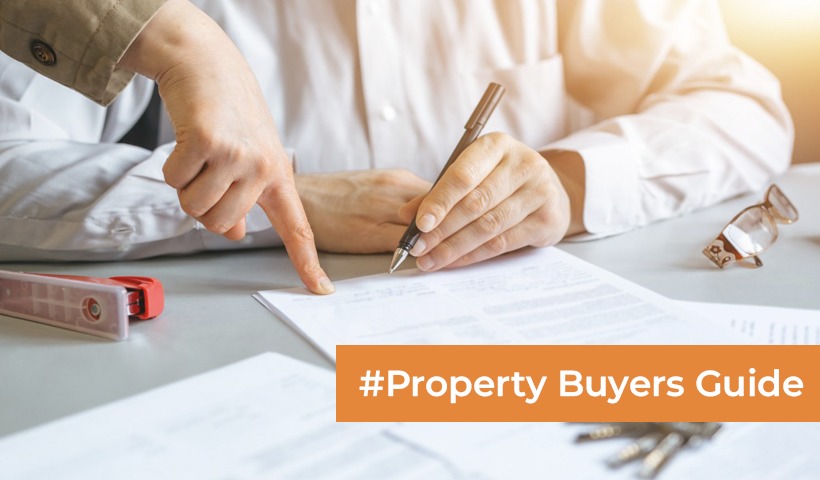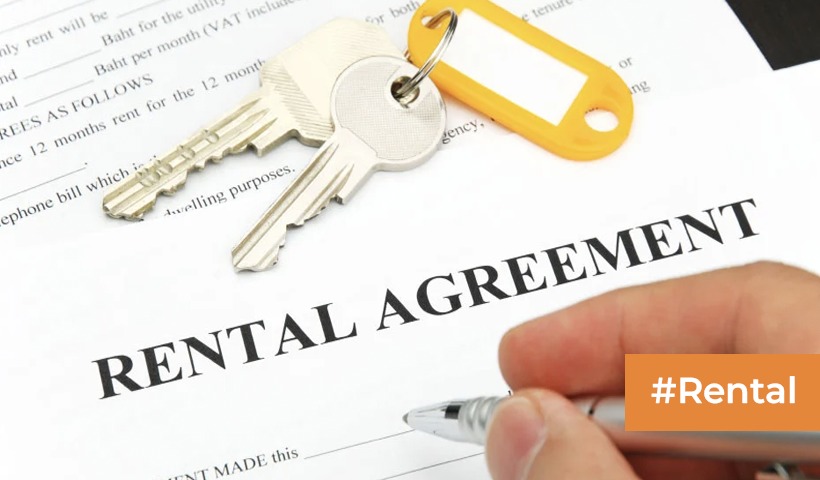Leave and License Agreement: Meaning, Maximum Period and Benefits
A leave and license agreement is an essential contract that outlines the terms and conditions between a landlord (licensor) and a tenant (licensee) in the context of property transactions. Under the terms of this agreement, the licensee is granted the right to use the licensor’s property for a predetermined amount of time, provided that rent or other remuneration is paid.
What is a Leave and License Agreement?
A legally enforceable agreement that controls the temporary transfer of the right to use and occupy property is known as a Leave and License Agreement, or just a License Agreement. Under this agreement, the “licensor,” who is the owner of the property, gives the “Licencee,” permission to use the space for a predetermined amount of time.
Furthermore, a lease and a leave and license agreement are not the same thing. The latter does not transfer ownership or establish a landlord-tenant relationship, in contrast to typical leases. Rather, it grants a restricted permission to utilize the land. This difference is important since it makes eviction in the event of a disagreement simple. Modern technology has made it easier than ever to create and manage a Leave and License Agreement online, which expedites the procedure for all parties.

Key Components of Leave & License Agreement
Important information including the names of the parties, the length of the agreement, and the conditions of rent or compensation are usually included in the agreement. It also outlines the licensee’s and licensor’s responsibilities and rights for the duration of the agreement.
| Component | Description |
| Parties Involved | Clearly mentions the licensor (property owner) and the licensee (tenant). |
| Property Details | Specifies the location and description of the licensed property. |
| License Duration | Defines the start and end date of the agreement, indicating the period for which the property is licensed. |
| License Fees | States the rent or compensation that the licensee must pay to the licensor. |
| Security Deposit | Details the refundable deposit amount to be paid by the licensee at the beginning of the agreement. |
| Termination Clause | Outlines the conditions under which either party can terminate the agreement. |
| Renewal Terms | Mentions the terms and conditions for renewal or extension of the agreement, if applicable. |
| Maintenance Responsibilities | Specifies who is responsible for the maintenance and upkeep of the property. |
| Utility Payments | Clarifies who will bear the cost of utilities such as water, electricity, gas, etc. |
| Use of Premises | Indicates the specific purpose for which the property will be used, such as residential or commercial use. |
| Force Majeure Clause | Covers situations like natural disasters or unforeseen events that could affect the agreement. |
| Dispute Resolution | Outlines the process for resolving disputes, typically through arbitration or legal proceedings. |
Understanding the Purpose of a Leave and License Agreement
A structured method to property leasing is provided by leave and license agreements, which give both landlords and tenants clarity and legal protection. These agreements provide landlords with a way to control the conditions of the rental, guarantee prompt payments, and set precise rules for how the property may be used. Tenants gain from established dispute resolution procedures, protection from arbitrary eviction, and precisely stated occupancy terms.
What is the maximum period of leave and license agreement?
In India, a leave and license arrangement might last up to 11 months at most. Generally speaking, whether an arrangement is for residential or commercial use, it lasts for 11 months. The lessor and lessee may choose to determine the duration of the leave and license agreement; it is not necessary for it to be renewed for a mere 11 months.
Common Misconceptions about Leave and Licence Agreements
One common misconception is regarding the security deposit, with some confusing it with advance rent. Another misconception involves the tenure of the agreement, with tenants often assuming rights similar to those under a lease.
Benefits of a Leave and License Agreement
Flexibility: It provides both property owners and tenants with flexibility. It is appropriate for professionals in the workforce, students, and individuals looking for short-term housing because it permits short-term agreements.
Legal Clarity: This agreement lessens the possibility of conflicts by precisely outlining the terms and circumstances of occupation. It offers a formal structure for dealing with matters like rent, security deposits, and upkeep obligations.
Eviction Process Speed: Eviction under a Leave and License Agreement is simpler than under regular leases. In case of non-compliance or conflicts, the property can be reclaimed by the licensor without the need for lengthy judicial fights.
Property Protection: By defining their rights and assisting in the preservation of their assets, property owners gain from the additional layer of protection.
Online Convenience: The procedure has gotten easier and faster with the ability to form and manage agreements online.
Legal Requirements and Regulations
Leave and licence agreements are subject to specific legal requirements and regulations, varying by jurisdiction. In many regions, these agreements need to be registered and stamped to be legally enforceable. Failure to adhere to these legal formalities can render the agreement void or unenforceable in case of disputes.
Important Clauses in a Leave and Licence Agreement
A leave and license agreement must contain a number of essential sections, such as ones addressing maintenance obligations, renewal periods, and dispute resolution procedures.
Party clause: It is necessary for the agreement to include a provision naming the parties. The party name clause, which lists the names of the licensee and licensor together with their address and evidence of identification, is a crucial provision. The licensee’s business must be recognised, and the commercial agreement must include the Company Identification Number (CIN), if applicable.
The section on definitions: In order to provide clarity throughout the agreement, this clause defines the many and particular terms and phrases that are used. This sentence is self-explanatory. Similar to “Premise,” which denotes that the term will be construed consistently throughout the agreement whenever it is used.
The location/premise: The location that is utilized or inhabited for residential or commercial purposes must be described in full, including the whole address, all of the area’s sides and borders, and the purpose, such as the kind of business that will be conducted there, as stated in a commercial agreement. The agreement should make it clear which space is to be utilized for what purpose.
Rights transfer: This phrase is crucial because it states unequivocally that the lessor is giving the lessee temporary ownership rights to his property. This clause, which is likewise essential to the agreement, states the primary goal of the contract.
Security deposit and rent: The security and rent amount clauses are explained in this section. Rent is the consideration that is agreed upon by the parties, and in some cases, a commercial agreement requires that one party share the other party’s profit margin in addition to the basic rent. In the event of a disagreement or default resulting from the lease, the lessor will get the security deposit from the lessee as protection. Ideally, this should be paid once both parties have signed the agreement and refunded at the conclusion of the term.
Duration of the Contract: The term should be made explicit since it is primarily set at 11 months. In contrast, a business agreement may have a longer duration that is mutually agreed upon.
Duties and obligations of both parties: The duties and obligations of both parties related to this Agreement shall be mentioned clearly in this clause. Both parties are legally bound to follow the terms. The duty of the tenant is to take care of the property very well, maintain peace, law and order in the place, pay the rent on time etc. The duty of the landlord is to provide proper facilities like water and electricity to the tenant in the premises for the period of the tenure.
Termination: This clause specifies the method of termination as well as the manner in which notices will be sent. Either party may end it, or both may. The extension or renewal of the agreement may be decided upon by the parties mutually either before or after the termination.
Resolving disputes: In the event that a disagreement arises over the terms of the agreement or throughout the term, this provision is the most crucial. The methods for resolving disputes are provided under this clause. The three most popular conflict resolution procedures are arbitration, conciliation, and going to court.
Steps to create a Valid Leave and License Agreement
Carefully weighing each term and condition when drafting a thorough agreement is necessary, as is legal scrutiny and registration to guarantee enforcement.
Get the Agreement Ready: To start, prepare a detailed Leave and License Agreement that specifies all terms and conditions, including length, rent, deposit, and each party’s obligations. Make sure that it complies with the law.
Go to the Office of the Sub-Registrar: Visits to the local Sub-Registrar’s Office are required for both the licensee and the licensor; these offices are often under the control of the rental property.
Get the Agreement Stamped: Based on the rent amount and state-specific rates, pay the applicable stamp duty. The Sub-Registrar’s Office or an approved stamp distributor are the places to do this.
Send in Documents: Send in the necessary paperwork, such as the draft agreement, identification and address verifications, and evidence of property ownership.
Witnesses and Signatures: Sign the agreement in front of two witnesses. The addresses and identities of the witnesses must also be disclosed.
Registration: After examining the paperwork and confirming the parties’ identity, the Sub-Registrar will register the Leave and License Agreement. It becomes a legally valid document when it is registered.
Get the Registered Agreement: After registering, get the properly stamped and signed agreement from the Sub-Registrar’s Office.
Online Registration: Leave and license agreements may be registered online in a few states. If applicable, proceed with the state’s online registration procedure.
Difference between lease and leave and license
Type of Agreement: For a certain amount of time, a lease gives the renter ownership and legal rights over the property. Under a leave and license, the user is just permitted to use the property; they are not granted any ownership or rights. The owner maintains complete control.
Tenure: Long-term leases are frequently signed for a number of years. With its customary short duration of up to 11 months, leave and license agreements provide greater flexibility.
Transfer of Interest: A leave and license merely grants the licensee the use of the property; it does not convey any interest in it. In contrast, a lease provides the tenant the right to the property for the duration of the agreement.
Rights of Possession: Tenant only is granted possession rights under a lease. Only usage rights are granted to the licensee under a leave and license agreement, leaving control with the licensor.
Legal Responsibilities: Formal legal safeguards for leases are provided under the Transfer of Property Act. Under the Indian Easement Act of 1882, leave and license agreements are less formal in nature.
Termination: Leases are more stringent than other agreements since they require a written legal notice to end. A brief notice can be used to quickly end leave and license agreements.
Goal: Although leave and license agreements are better suited for short-term or temporary usage without a long-term commitment, leases are preferable for long-term occupation.
Difference between rental agreement and leave and license
Transferability and Interest
Agreement on Leave and License: Permission to use the property is granted by a leave and license agreement, which does not transfer ownership of the property. The licensee is not granted ownership or property rights under this permission-based arrangement. Furthermore, it is usually not possible to transfer leave or license agreements to another individual.
Rental Contract: In a similar vein, a rent agreement permits the short-term use of property but does not transfer ownership. Certain leases, particularly longer-term commercial leases, may give rise to a leasehold interest in the property, in contrast to leave and license agreements. The conditions of the lease and local legislation will usually determine whether a lease can be transferred.
Term: Leave and License Agreement: May be executed for a number of time periods, including as little as eleven months.
Rent Agreement: Not just restricted to monthly terms, but also available for signature for a variety of lengths.
Property type and assets: Lease and Licence Agreement Usually carried out for real estate.
Rent agreements: These are frequently completed for both immovable and mobile objects, as well as for lands.
Maintenance Responsibilities
Departure and License Conditions: Depending on the specifics of the contract, different maintenance duties may apply.
Rent Agreement: Tenant or renter is often in charge of maintaining the property and is accountable for any repairs. When it comes to leasing, especially commercial leasing, the industry or business that invested in the lease may be responsible for maintenance, instead of the lessee.
Flexibility in Terms
Lease and License Agreement: The leasing agreement contains preset and mutually agreed-upon terms and conditions.
Rent Agreement: At the landlord’s discretion, terms and conditions of rental agreements may be altered at any moment.
Enforcing a Leave and Licence Agreement
Parties may pursue legal action in accordance with the provisions of the agreement in the event of disagreements or violations. To ensure seamless enforcement and lower the likelihood of disagreement over the agreement’s duration, it is imperative that the licensee and the licensor have a clear understanding of their respective rights and duties.
Things to avoid before signing a Leave and License Agreement
Do not sign agreements that are not thorough or forego legal advice since these actions may lead to disagreements or other issues down the road. To protect the interests of both parties, make sure that all terms, conditions, and pertinent information are spelt out in plain and concise language and that all legal procedures are adhered to.
Role of Technology in Leave and Licence Agreements
Technological advancements have streamlined the process of drafting and executing leave and licence agreements, with online platforms offering convenient solutions for documentation and digital signatures.
Case Studies and Examples
Real-life examples illustrate the importance of leave and licence agreements in protecting the interests of both landlords and tenants, showcasing the significance of clear and comprehensive agreements.
Future Trends in Leave and Licence Agreements
The future of leave and licence agreements is likely to be shaped by advancements in technology, alongside potential legal reforms aimed at simplifying procedures and enhancing enforceability.
Conclusion
Leave and licence agreements play a vital role in property transactions, offering a structured framework for tenancy arrangements while providing legal clarity and protection to both parties involved. Understanding the key components, legal requirements, and potential pitfalls is essential for creating effective agreements and ensuring smooth tenancy experiences.
FAQs
Why is the leave and license agreement for 11 months?
The 11-month period helps avoid the applicability of rent control laws, which often kick in for agreements of 12 months or more. This provides flexibility for both parties and simplifies the legal process.
What are the Disadvantages of a Leave and License Agreement?
The main disadvantages include a lack of long-term security for the licensee and easier termination for the licensor, making it less favorable for those seeking stable, long-term occupancy.
Which is Better, Lease or Leave and License?
A lease is better for long-term, stable arrangements, providing stronger legal rights for tenants. A leave and license agreement is more flexible and suitable for short-term use without transferring property rights.
What is the Maximum Tenure of a Leave and License Agreement?
There is no fixed maximum tenure, but most agreements are typically for 11 months. Longer durations are possible, but they may trigger rent control laws and require additional legal formalities.
What Happens if a Leave and License Agreement is Not Registered?
If the agreement is not registered, it may not be legally enforceable in court. Unregistered agreements can lead to complications and difficulties in resolving disputes.
Can We Cancel a Leave and License Agreement?
Yes, a leave and license agreement can be canceled, typically with prior notice as per the terms stated in the agreement. The process is generally simpler compared to lease agreements.
Disclaimer: The views expressed above are for informational purposes only based on industry reports and related news stories. PropertyPistol does not guarantee the accuracy, completeness, or reliability of the information and shall not be held responsible for any action taken based on the published information.




